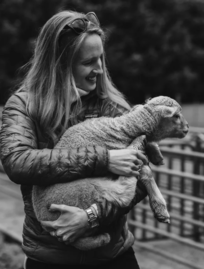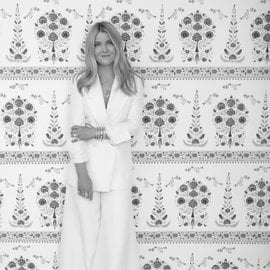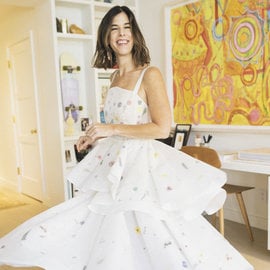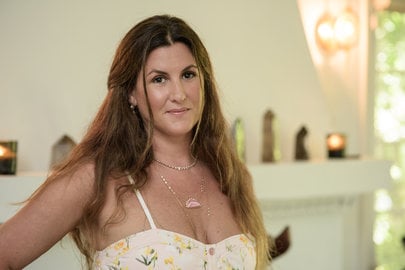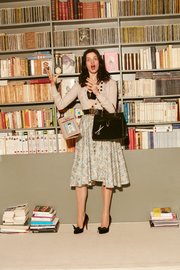After working as a designer for nearly 20 years in the fashion industry, Erin Reitz is creating her own collection. From brain surgery to finding peace and beauty in her recovery, and now launching E.M. Reitz, Erin's inspirational journey is a testament to the beauty of life and the power of a strong spirit.
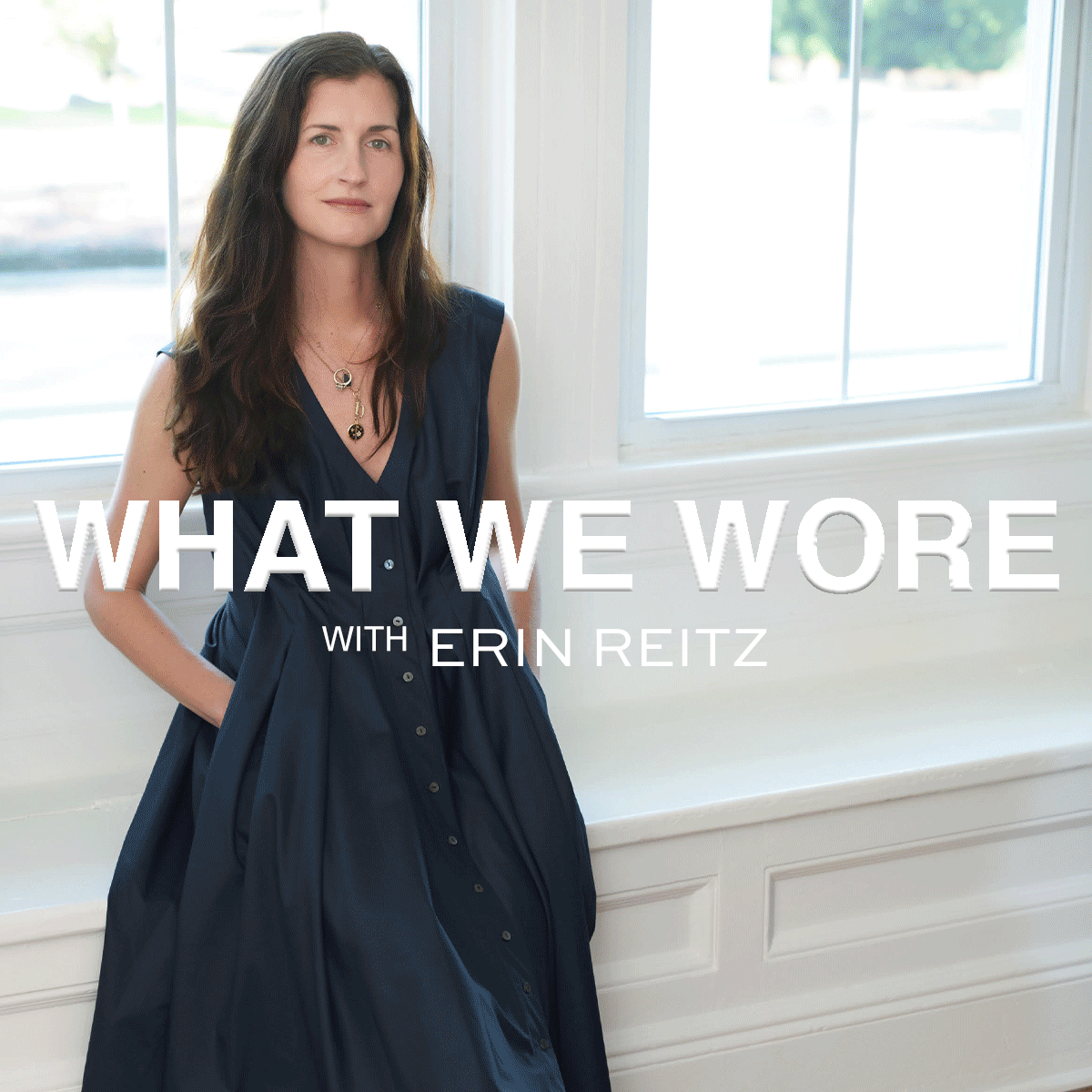
Listen Now
Laura Vinroot Poole Vinroot Poole:
Erin Reitz. I'm so happy to have you on the podcast.
Erin Reitz:
I'm so happy to be here.
Laura Vinroot Poole:
I'm thrilled. Erin, I always connect you to Charleston, but I know that you're not from there. Tell me where you're from.
Erin Reitz:
I am from Rockville, Maryland. A suburb of DC. I grew up there. I went to college there, the University of Maryland. And then I sort of moved all over. My mom moved to Montana when I was 17. It was very random. My mom was the Deputy Chief of the US Forest Service, and she fell in love with her boss, the Chief of the Forest Service. They had a secret love affair, and then, in order to get married, they both retired.
Laura Vinroot Poole:
Will you tell me a little bit about growing up. What were you like as a person?
Erin Reitz:
I’m seeing myself currently in my own child. My son is two and he's insane. Everyone on my side of the family is like, "Yeah, you deserve that." I was hyper, curious, creative, always making things. I would say, generally just sort of a curious spazz, is how I'd qualify myself.

Laura Vinroot Poole:
And your mom always encouraging and supportive of your creativity?
Erin Reitz:
Absolutely. I think she was interested by it. My mom, later in her life is becoming a bit more creative, but she's always just been very sort of pragmatic. She was always very encouraging. My favorite book that she bought me growing up, I wish I could remember the name of it and find it for my son, but it was all about creating art out of trash. It was all these ideas of... this was before we recycled. It was all these ideas of, don't throw these things away and how to make sculptures out of trash. I would spend a lot of time doing that.
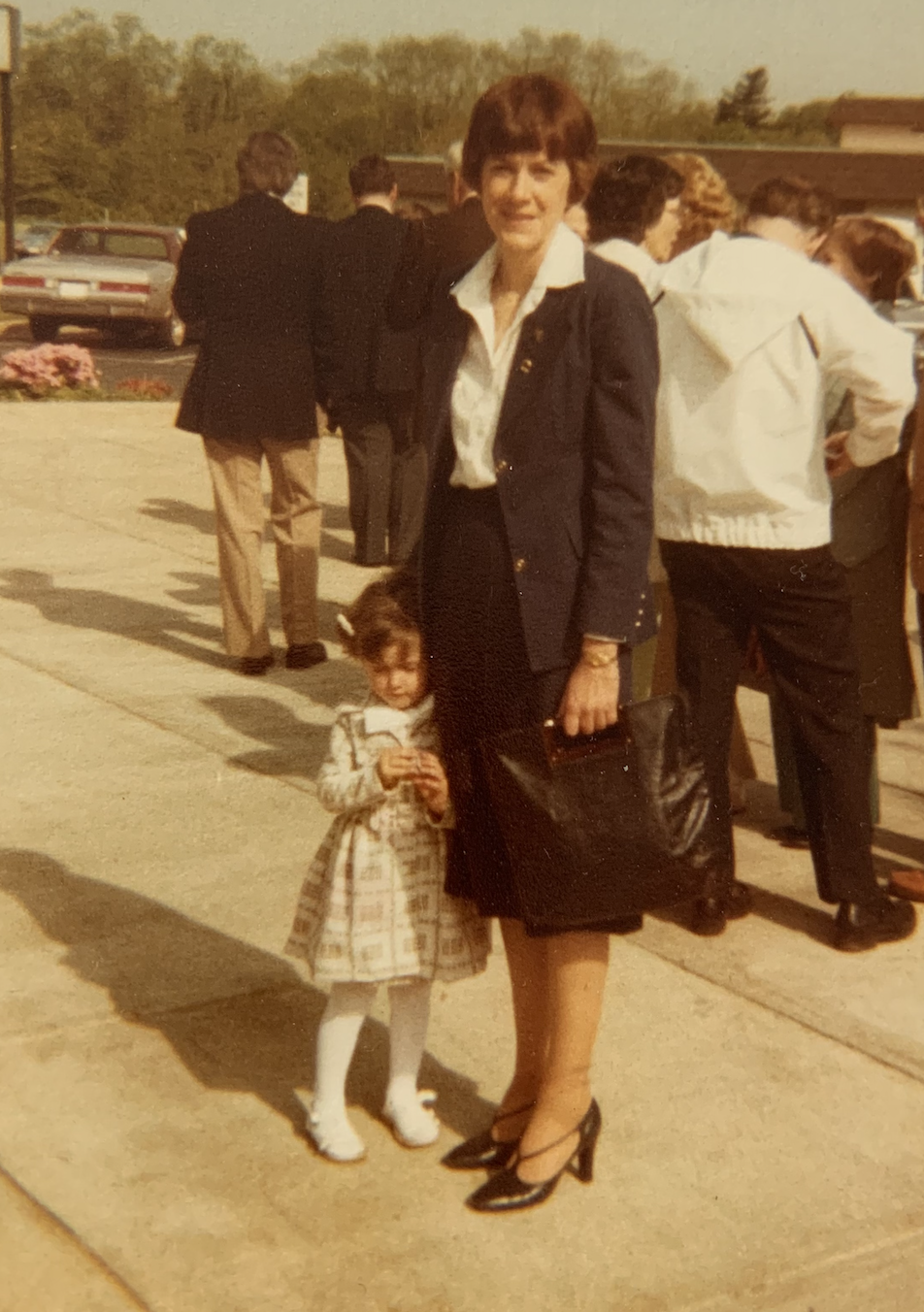
Laura Vinroot Poole:
How amazing. You went to the University of Maryland and what did you study at Maryland?
Erin Reitz:
I studied business because I had no idea what I wanted to do. It's honestly when I look back, it's one of those regrets that I wish I had put more thought into it. I just went to school near home. Coming from a family where everyone worked for the government, although I had creative pursuits my whole life, I was very into photography all through high school and then started to get into sculpture... I just didn't think that that was an option for a job. So, when I was just sort of perusing majors under the scope of business was marketing, and that seemed interesting to me. Marketing, at the time, when you were studying graphics design, it was like, you're literally cutting out pieces of paper and letters and gluing them to boards. It was very hands-on graphic design. I thought that was interesting. I thought maybe the storytelling of marketing could be something that I would want to do. So, that was my major. I started taking so many art classes throughout. I ended up minoring in art with a focus on wood sculpture.
Laura Vinroot Poole:
How did you go from wood sculpture to fashion?
Erin Reitz:
It is a very interesting story. Fashion found me. I am not your typical clothing designer that had been sketching outfits since they were seven. I really didn't have any interest in fashion. I loved magazines and I loved looking at magazines, but I was more interested in the graphics and layout of magazines growing up. After graduated from Maryland, a couple friends of mine decided to move to New York and they just called me one afternoon and said, "We're moving to New York. Do you want to be our roommate?" I thought about it for about two seconds and said, "Yes." We had a U-Haul and just we found an apartment in the East Village. I did not know that was cool or anything. We just found an apartment. I knew nothing about New York. I hadn't explored it at all. So, I was just looking for jobs in marketing, not even really knowing what that meant.
Erin Reitz:
I was having a really hard time finding a job, considering I didn't even really know what job I wanted. And my roommate was also having a hard time finding a job. I was lost. I had no idea what I was going to do. I was at a bar and went to the bathroom wearing a tote bag that I had made a few years prior. And this woman approached me in the bathroom and said, "Hey, I really like your bag." I was so complimented. I said, "Thank you. I made it." We just started talking. We really hit it off. It turns out that at the time she was the head designer at Nanette Lepore.
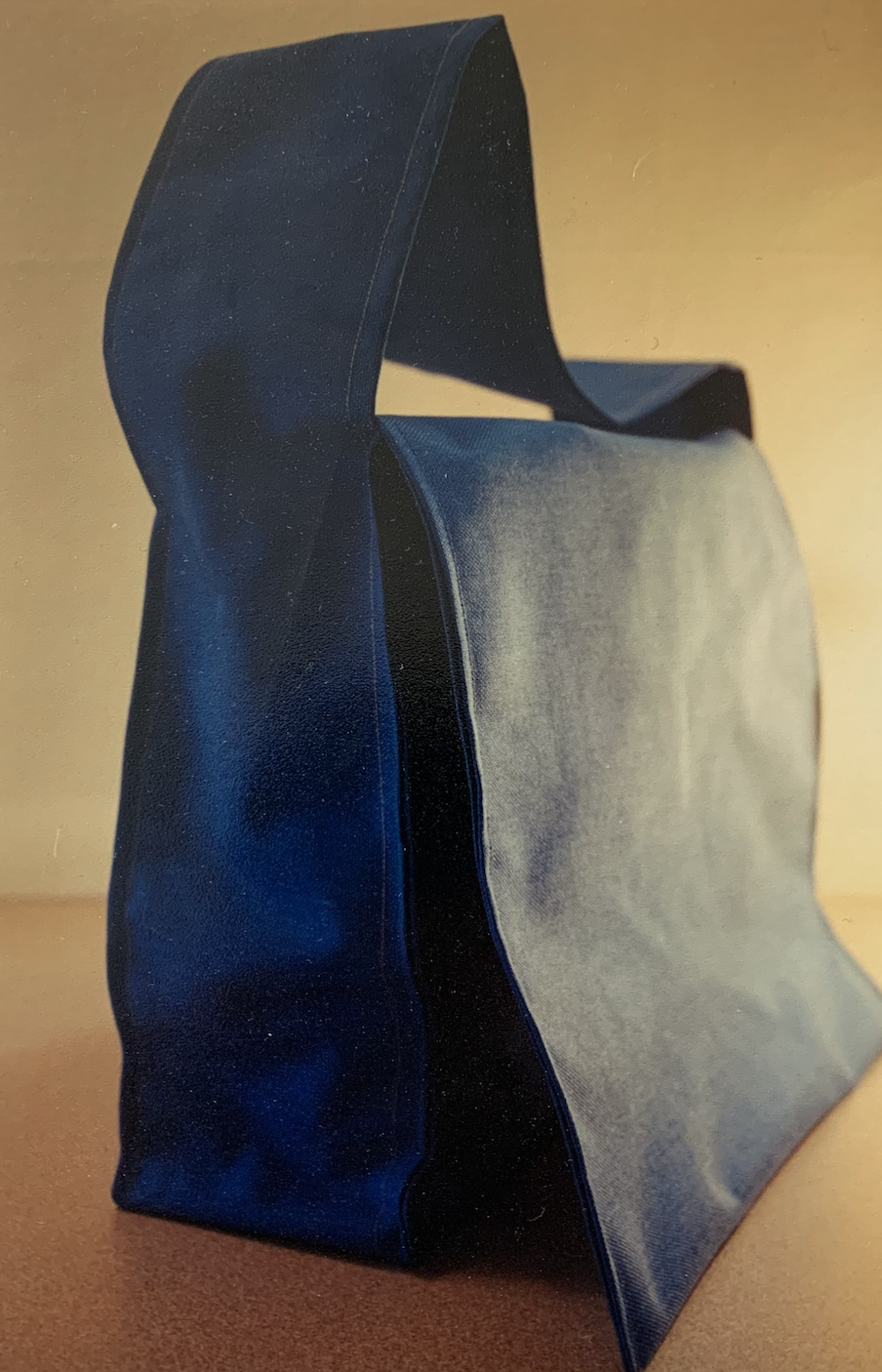
Laura Vinroot Poole:
You also had a life-transforming event happen. Will you talk to me about that?
Erin Reitz:
I will talk to you about it, because you sort of have that gift of opening people up with your warm light. I had a very life-transforming event. I had a few events where I was feeling dizzy and very, very sensitive to light, to the point where sort of any reflection shining into my eyes was making me feel nauseous and I couldn't move. I was losing my balance. At that time I got diagnosed with a benign brain tumor. I don't want to get too graphic, but it wasn't cancer, but it was called a cavernoma, which is basically a cluster of abnormally formed blood cells. It was bleeding, and actually slowly killing this portion of my brain. As that happened, I was losing more and more function. I got on disability for my job and I was just couch bound. It was crazy.
Laura Vinroot Poole:
And this is when you were in Seattle?
Erin Reitz:
Yes, I was in Seattle. I was 33 years old. I was just on the corporate track, Laura Vinroot Poole. I was not looking back. I wasn't even thinking of if I enjoyed my job at the time. I was like, "I'm a director. I want to be a VP." And then I had this course. I bought my apartment. I was just on my high, like, "This is my career. This is what I'm doing. I'm just going to keep on climbing this ladder." My life was so intense at the time. It was four trips a year to Asia to oversee production in several countries. Coming back and as soon as you're re-acclimated to this time zone then you're doing your shopping trips and all this stuff. It was just back and forth. It was actually fun. And it did have sort of a glamorous aspect it with all the travel and fun hotels and stuff like that. But it was really intense. And man, the universe just sort of slapped me on me. I thought I was just on this course. This is what I'm doing. Moving fast. I wasn't paying attention to my health. I wasn't paying attention to my stress levels. I wasn't even paying attention to my soul, to if I was fulfilling myself. I was just on it. And then I got slapped down.
Laura Vinroot Poole:
And how did it feel when you were diagnosed? I mean, what was the... I'm sure scary in the beginning, but how did that evolve?
Erin Reitz:
In the moment I got diagnosed, it was one of those times, actually... It's funny, because I don't really talk about this much because people don't really ask that... but where time really slowed down and I can remember exactly what happened when they told me. They turned on a computer screen and showed me the film of my brain that quite obviously had this big spot in it. And he told me I had a tumor. And I just paused. My mom was sitting next to me and I said to myself, "Am I going to be strong? Or am I going to break?" And in that moment I was just like, "Got to be strong."
Laura Vinroot Poole:
I understand that. Tell me about the recovery from that, Erin, and what that was like.
Erin Reitz:
From diagnosis until I had surgery, that was probably, I don't know if it was six months or a year. I can't remember. I saw maybe 15 different doctors to sort of get to my path of healing. I ended up going to the Mayo Clinic and that's where I found the most incredible team and my surgeon. It was an eight-hour surgery resecting the tumor. I'll never forget, because the doctor woke me up on the table and, like I said, I was very sensitive to light. That was one of my biggest symptoms. He woke me up on the table in an operating room, where it's the most offensive light that you could possibly imagine. And it didn't hurt. Literally the moment he woke me up. But the recovery itself, the first 24 hours, I actually can physically remember it was hell…. it was the most uncomfortable time of my life. But I will say then, the following week and two weeks and two months and three months were just... It was one of the most special times in my life. It was very hard, physically. I was very tired and lethargic. I don't think I could walk around my block by myself for two months. Because when your brain is healing, all your functions are just shut down. It was a very slow time and it was a very quiet time. What's so interesting is there's a few people who talk about this, but my tumor was in the left side of my brain. And the left side of my brain was very swollen and not functioning properly. That shut down the logic side and the list side, the to-do side, the calendar. Anything that had to do with sequence was shut down. I couldn't do it. And so my right side was like, "What?" It just expanded into this amazing, limitless, just spirituality and seeing beautiful things. I have these vivid memories of just laying on my couch And there were two trees outside my window and just watching them sway in the wind. I would just sit there and watch the branches. It was just a very meditative, poetic time in my life, which was very surprising.

Laura Vinroot Poole:
Tell me about this next chapter, starting your own collection, launching your own collection, E.M.Reitz. How did that come about? And what's it been like?
Erin Reitz:
It's been amazing. Coming out of this recovery, and back to your question of, "Are you afraid?" I think the deal I made with myself at the time, and I wonder if you have had a similar experience, was, I'm just not going to do it unless I really want to do it, unless it means something to me. Anything. Who am I going to hang out with? Where am I going to go? What am I doing professionally? It has to mean something. And working with Natalie Chanin in Alabama has really reignited my love for clothes, seeing a whole new way to produce, rather than the way production was happening in all these large companies I was working for. I just started draping again. It was honestly during COVID. I had some time and I got a dress form and I hadn't draped in years. Because like I said, I'd been in management then for a long time and I was just really disconnected from the design process. I love learning. And I started taking online courses through Central Saint Martins. They have an amazing continuing ed program. I was getting up at like five in the morning and taking draping and pattern making online and teaching myself these skills again, that I had learned at FIT 20 years ago. It just came back.
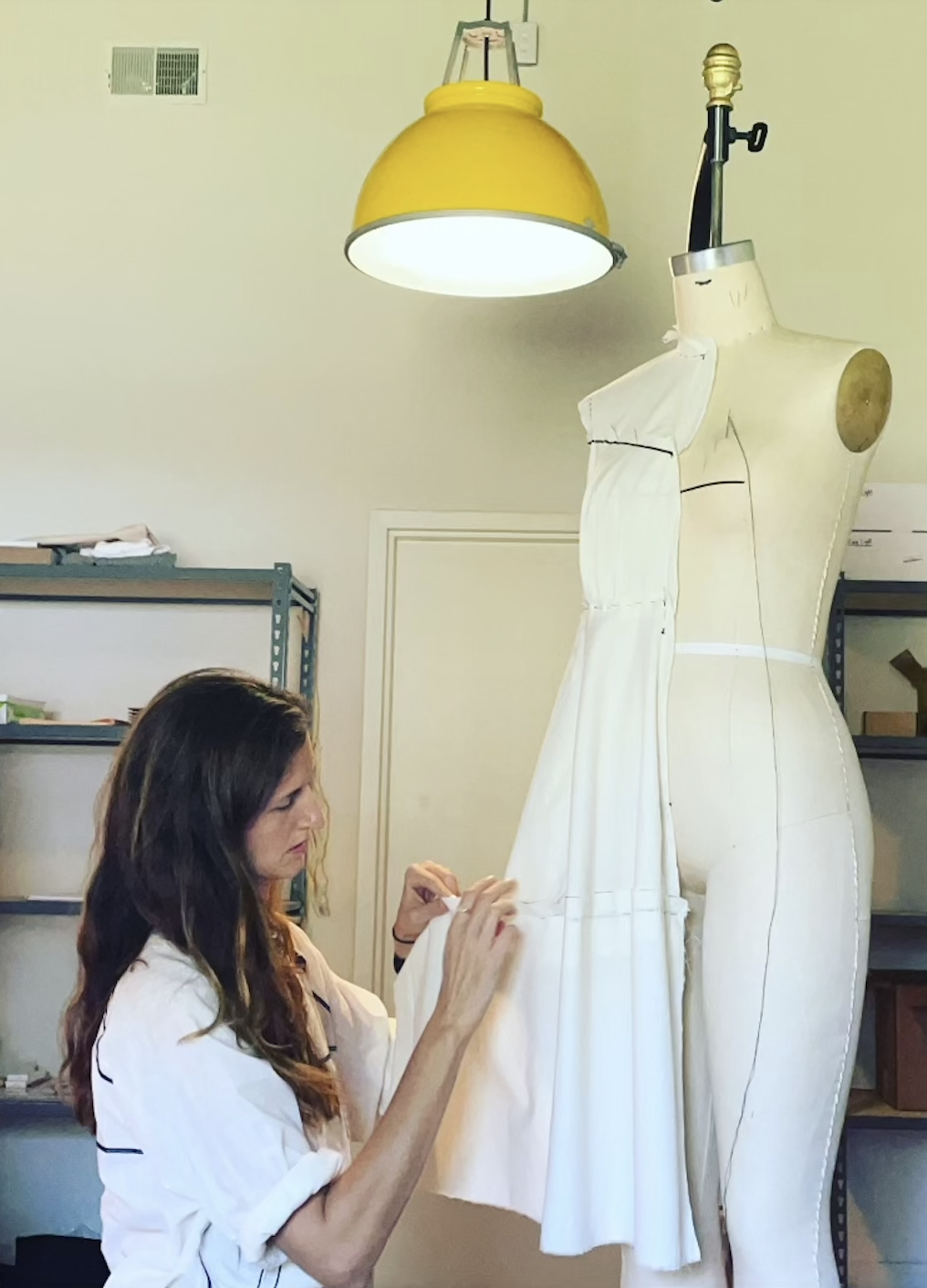
Laura Vinroot Poole:
Did you feel like you had lost it from the surgery? Or had you just stopped doing it for so long that you kind of forgot?
Erin Reitz:
Just I had stopped doing it. It wasn't a requirement, nor was it encouraged in the companies that I was working for. So, yeah, I had just forgotten. Well, once I got back into it, I realized I hadn't really forgotten. I just hadn't done it in a long time.
Laura Vinroot Poole:
Draping is such a specific part of your brain? And it probably is that right side.
Erin Reitz:
Exactly. I still love to live in my right side. And now I have an excuse to not be in my left. But I mean, I do have to be in my left sometimes, in starting a business certainly, as I'm sitting here setting up my skus and QuickBooks and all that, there's a lot of left. But yeah, draping is very different from pattern making, in that not only is it three-dimensional versus two-dimensional on paper, it's three-dimensional with the fabric, but there's a lot of rules, there's structure. You can drape in a very structured way, but you can also be very loose with it. So, typically, I'm starting just with a large piece of fabric and the dress form and pins. And I don't even know what is going to come out. I'll just start manipulating the fabric and, for lack of a better word, draping it over the form. It's just bliss for me. It's my happy place to put on earbuds, listen to some music, and make a form.
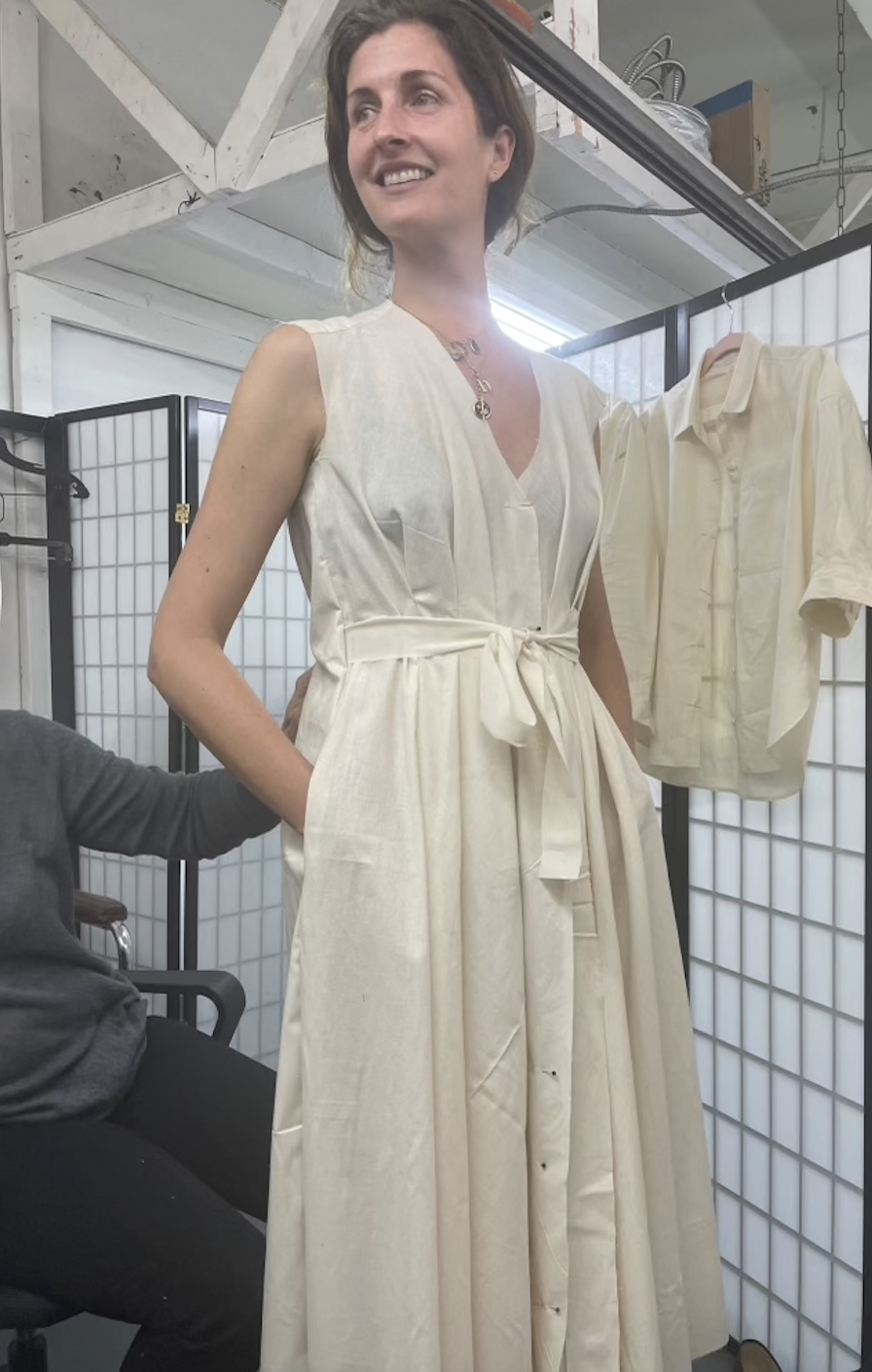
Laura Vinroot Poole:
Will you talk to me about the clothes in the new collection?
Erin Reitz:
Selfishly, the first client is me. I've never designed for myself before. None of the companies that I worked for were products that I had really worn myself, until working with Natalie, I would make quite a few things that I loved as well. But this is the first time where I was focusing on what was I missing in my wardrobe? And what am I wanting to wear? And then, that extends to sort of women who... I'm in my 40s. When I am out there shopping, there's a lot of very sexy stuff or there's also a lot of really feminine stuff that's beautiful for some people, but it just wasn't fitting for me. I like tailored clothing. I've always been inspired by menswear. I like a very classic wardrobe.
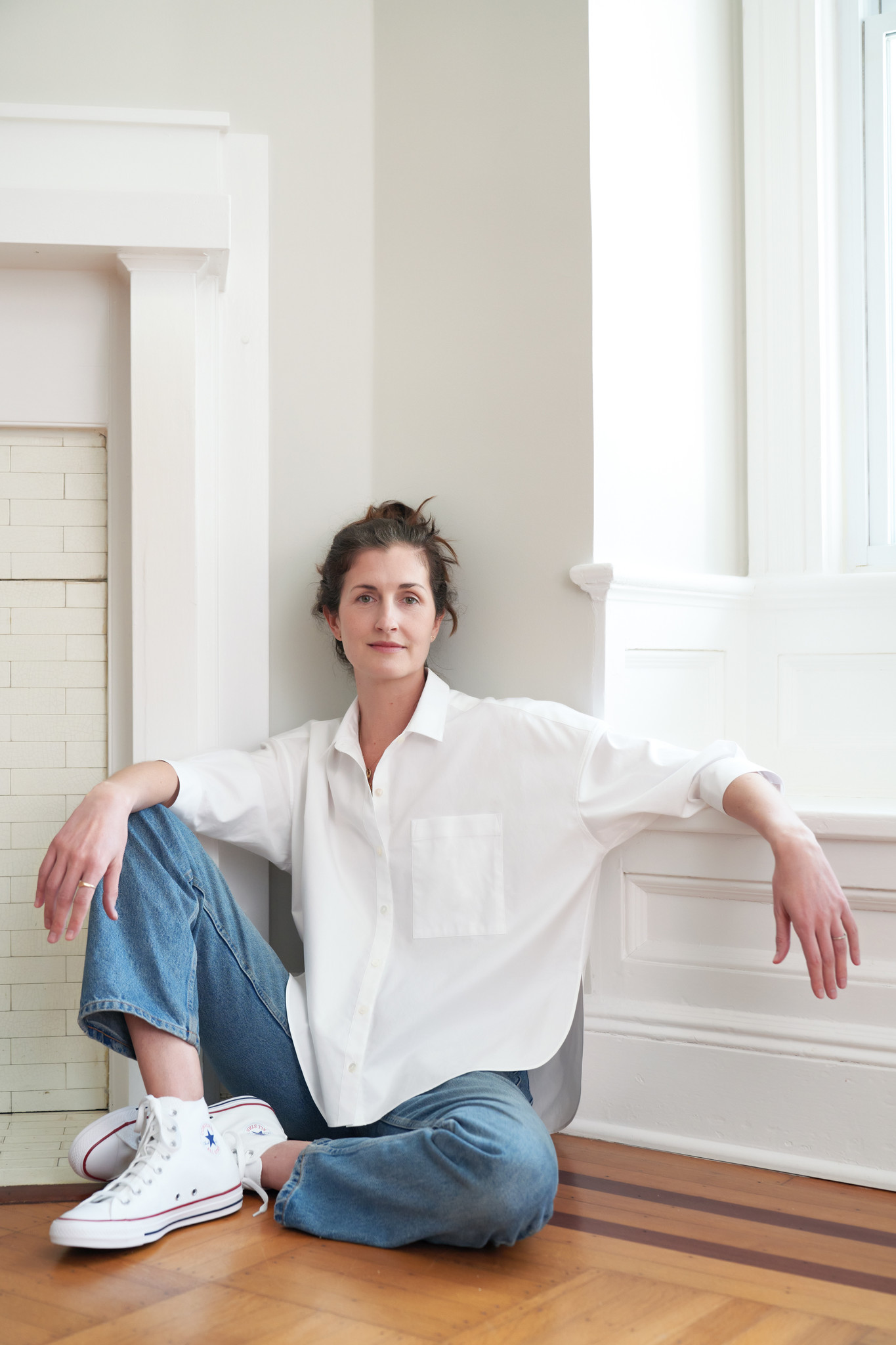
Erin Reitz:
I like a uniform dressing approach where I like to be a light packer. I like to bring five things on a trip and I can just wear them all at once. I have very specific requirements for my wardrobe. I just wasn't really finding them out there. So, I started draping for myself. And I would say that the client is a woman in her 40s or 50s or 60s - somebody who wants to feel put together and confident and powerful, but is feminine, and sort of accentuating some of the shapes of a woman's body. I'm very inspired by Japanese clothing. I'm very inspired by Scandinavian. But it's sort of tent-like and abstract. I want to show a little bit more of my figure, so I'm sort of making this line all from men's wear fabrics. Currently all men's shirtings. I'm draping these fabrics into shapes that accentuate a woman's body. So, it's somewhat feminine, but in a tailored way.

Laura Vinroot Poole:
Erin, we have a new favorite question this season, inspired by Tim Ferris, who I talked to you about earlier. Do you have a favorite failure?
Erin Reitz:
Oh, interesting. So, it's not the prom dress question? I think that's my favorite failure.
Laura Vinroot Poole:
That's now that's a good combo. I love it. Please tell.
Erin Reitz:
Ugh. It was really bad. And no, I will not share a picture with you later. It's so funny. We found a woman in town who would make dresses for you. So, I designed my own prom dress. And this was way before I was interested in clothes. I mean, I literally dressed like Dave Grohl in high school. I was very into grunge.
Listen Now
